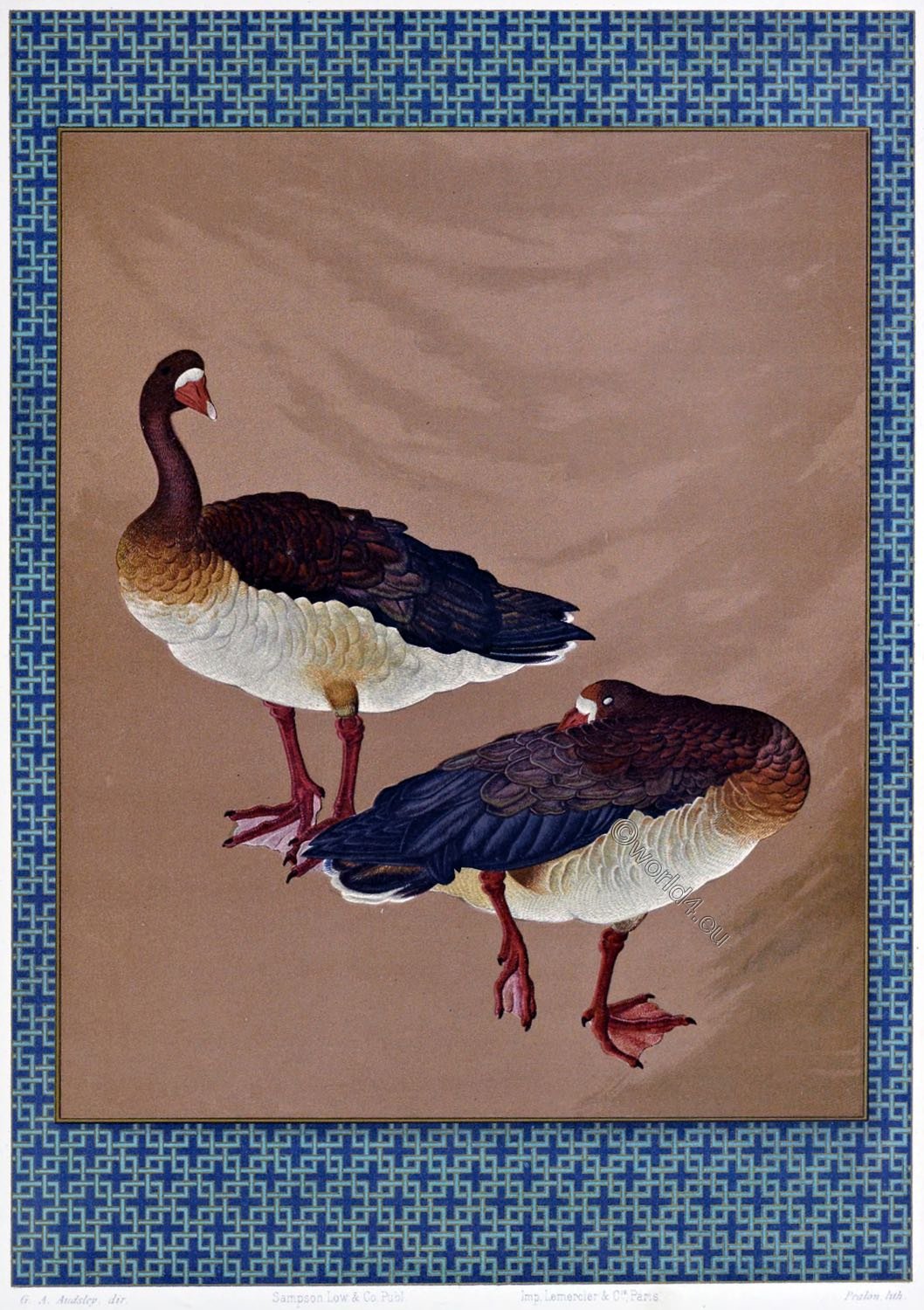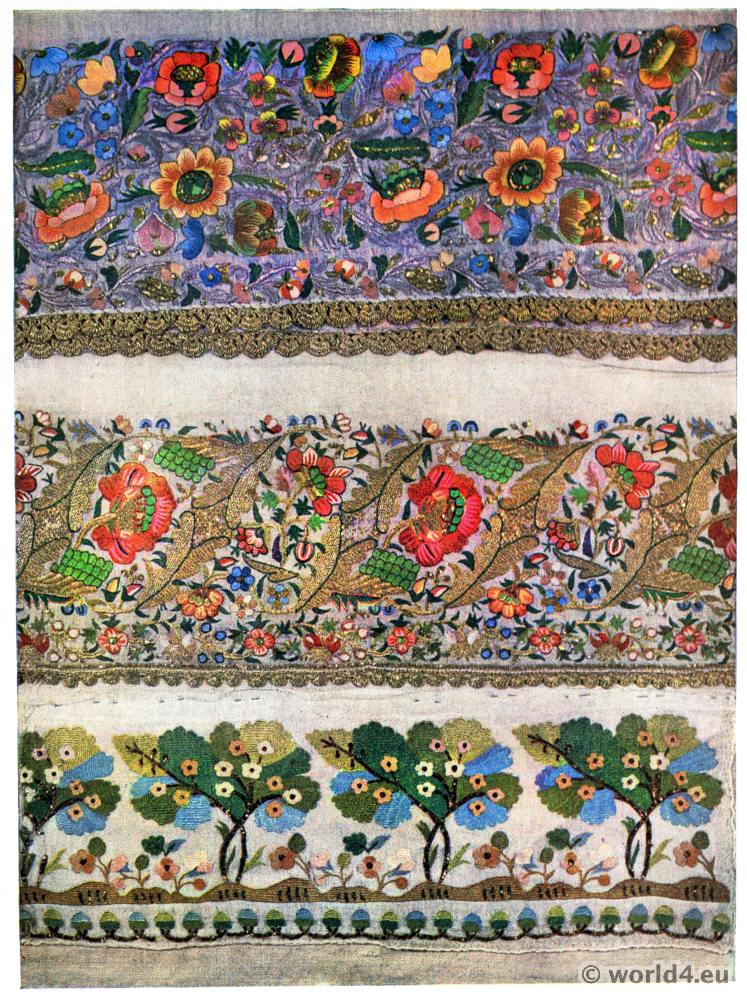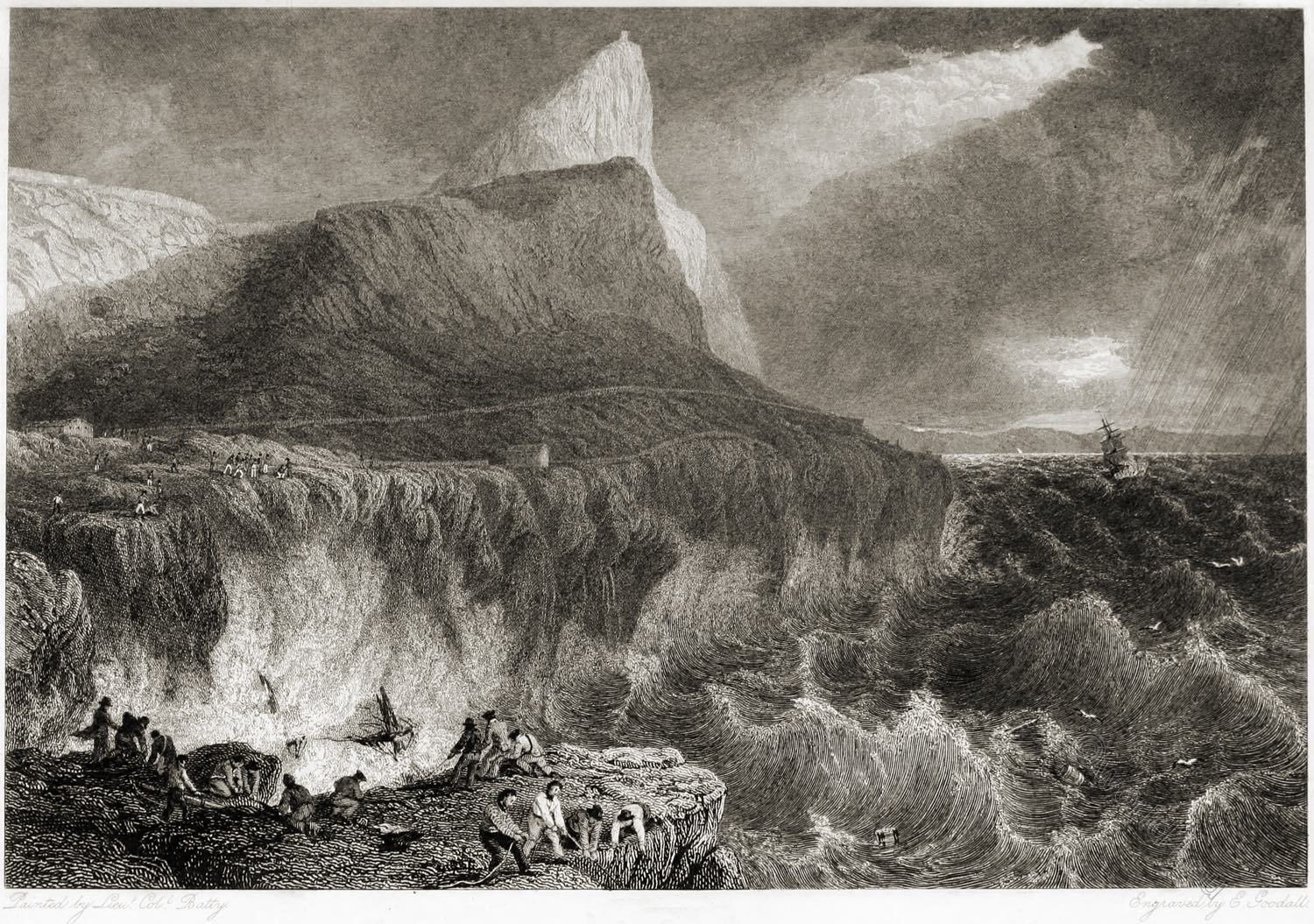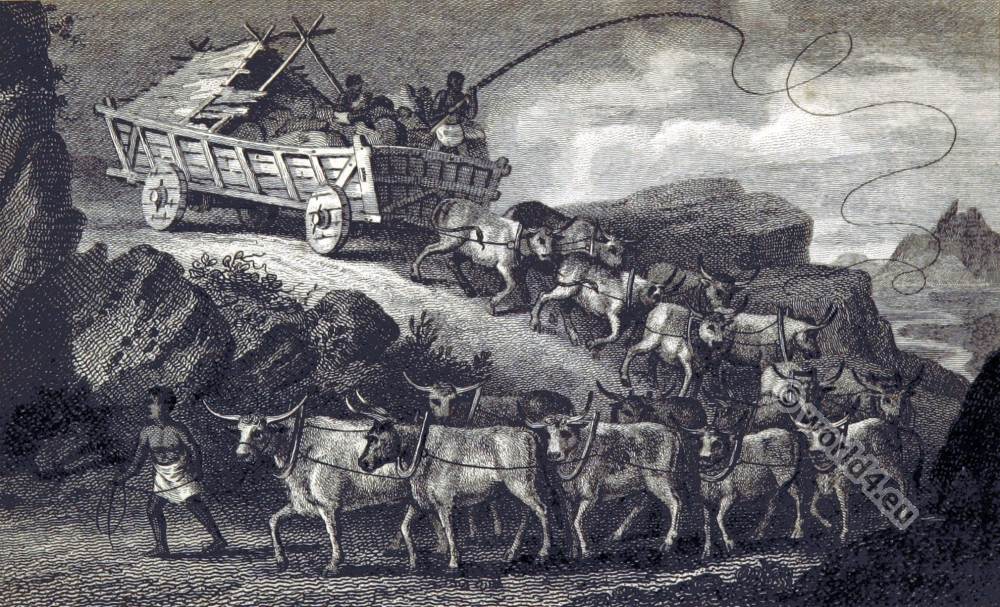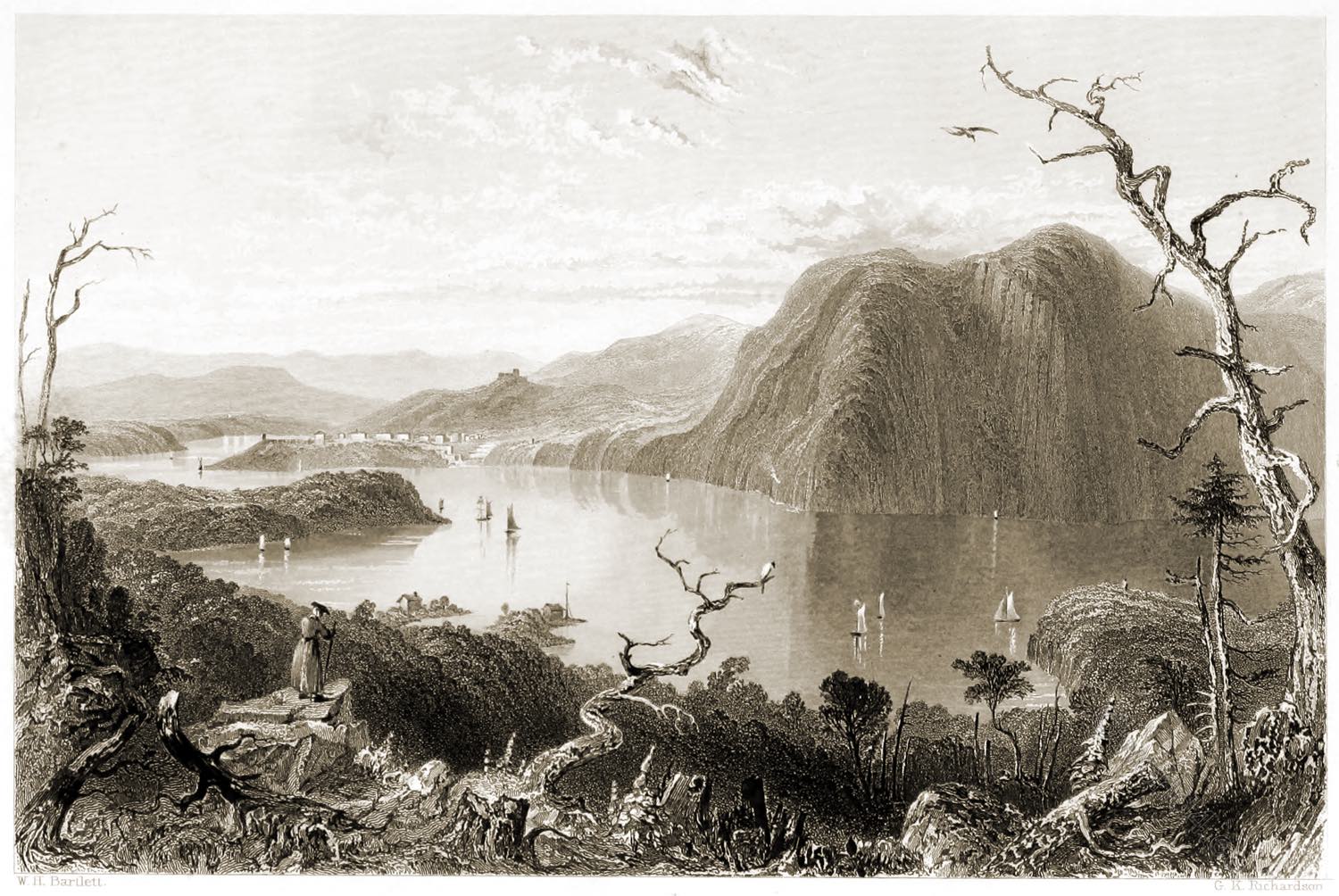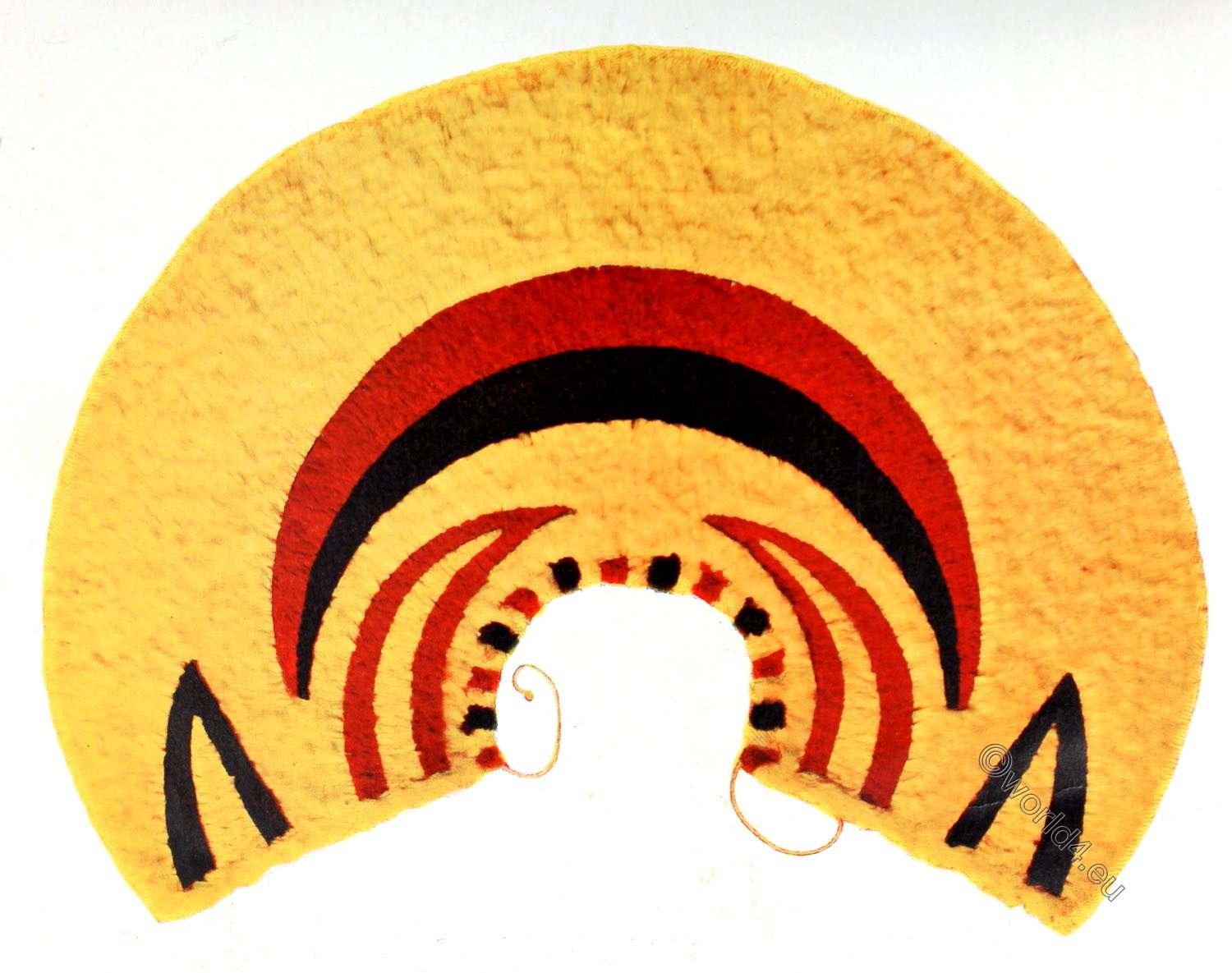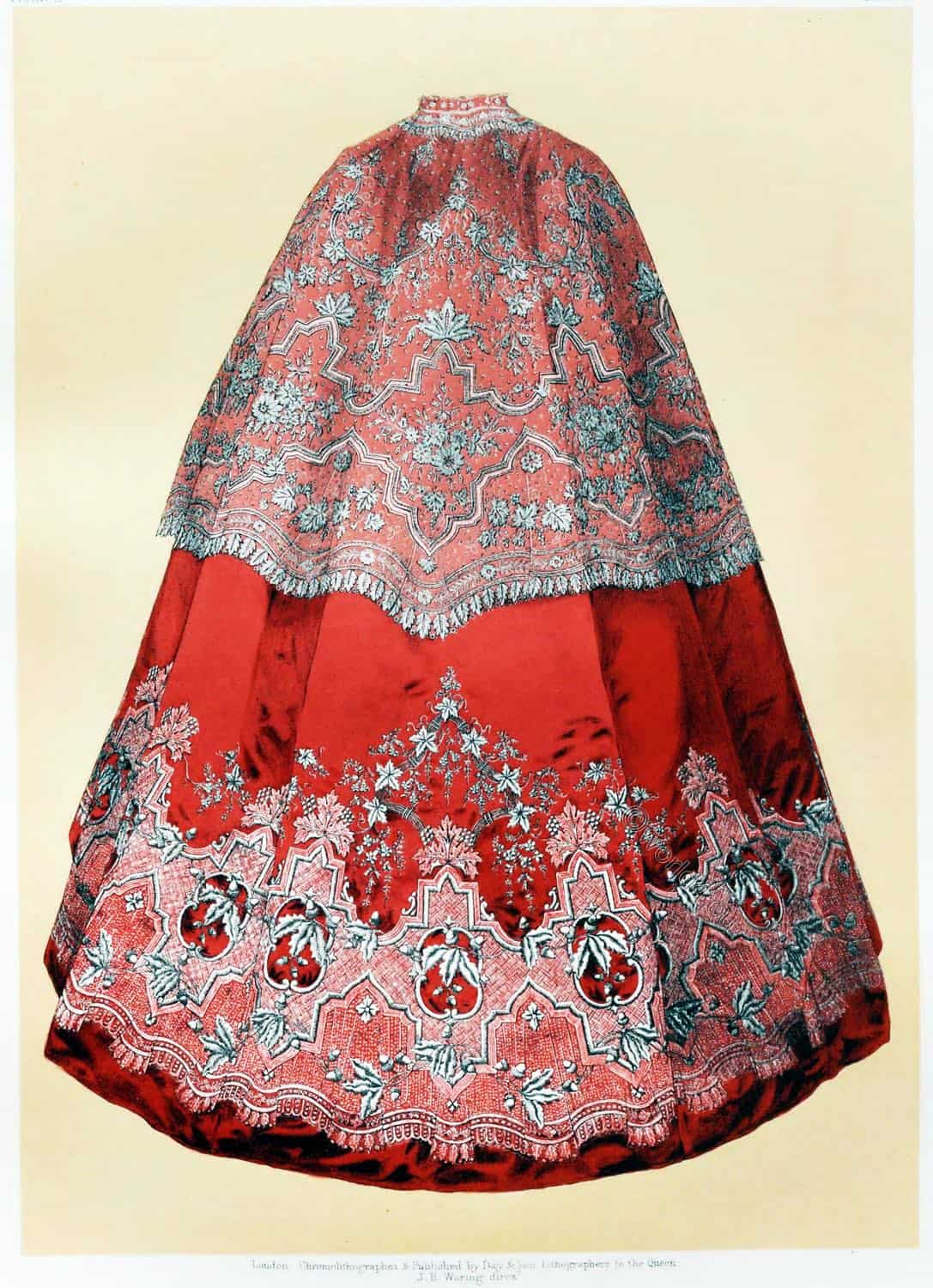
AN EMBROIDERED MANTLE WITH A CAPE
BY J. B. BOUILLET, PARIS.
FRENCH lace has lost nothing of its ancient excellence through the introduction of machinery; nothing could be more beautiful than the specimens of real lace exhibited by Messrs. Seguin, Loiseau, Geffrier Delisle & Co., Lecornu, Dognin, and others, which, unfortunately, we could not obtain permission to illustrate.
The example we have chosen was produced by M. Bouillet, of Paris, for Messrs. Grant & Gask, of London, a very beautiful application of needlework, and lace to a mantle, which obtained for M. Bouillet a medal, an honor which he likewise received at the Paris Exhibition, 1855.
The mantle forms a large circular shape of rich crimson satin, elaborately worked by the needle round the lower portion, the pattern representing lace-work. It is furnished with a lace cape reaching to the top of the embroidery, of very fine point d’Alençon. The mantle was valued at £300.
We condense the following remarks from the valuable Jury Report of this Class in 1851 :— “Embroidery-work of every description, in France, gives employment to about 180,000 females, in more than twenty departments: 8d. to 1s. a day is earned in the country, and double that sum in Paris. The two chief seats of the manufacture are Lyons and Paris. It is in the latter city that the greatest variety of embroidered articles in cotton, wool, silk, gold and silver thread, &c., are made. White embroidery, which forms the principal branch of the trade, is made in various ways,—by hand, in a frame, with needle or crochet, passé or plumeti, &c., and is always done on lace, muslin, or fine cambric.”
The chief seat of this manufacture is Tararre (Rhone), where lace and muslin for blinds are worked, as well as mousseline de laine for ladies’ mantles, dresses, &c., also done in crochet. At Luneville (Meurthe), the work is principally done on tulle with the needle, and consists generally of scarfs, collars, pelerines, &c. Fine embroidery in satin stitch is the most important branch of this local industry. The seat of this last-named beautiful manufacture was formerly Nancy ; but for some years past it has extended to the departments of La Meurthe, La Moselle, La Meuse, and Les Vosges (forming the ancient province of Lorraine). In these departments they formerly worked by the hand only, but for the last few years frame-embroidery has risen in estimation, as giving greater neatness and perfection to the work, especially in that which is extra fine. Special attention is now given to the instruction of new hands in the use of the frame only.
It is in the department of the Vosges that this work has been attended with the most complete success. The women of this department evince great aptitude for the work, and their number is daily augmenting. Every embroiderer pursues her work at home, leaving off when household affairs require her, and taking it up again when free. This system has introduced much comfort where it has been practiced. Mr. Birkin, in his official Report, 1862, observes that “‘real’ lace is principally made at Alençon, Caen, Bayeux, Chantilly, Arras, Lille and Bailleul, Mirecourt and Puy. The Alençon point lace made with the needle is the richest lace produced: it employs 8,000 women. The lace-girls of Caen, Bayeux, and Chantilly are celebrated as the cleverest workers in the world for black lace shawls: 50,000 women are employed in this manufacture.
The lace of Arras and Lille is not so much in request as it was some fifteen years since, and is rapidly declining. At Bailleul, Valenciennes lace only is made, which, though not equal to the Belgian, is esteemed for its whiteness and strength. The demand for the black and white guipure lace of Mirecourt is increasing: it gives employment to about 20,000 females. But it is at Puy that the most important manufacture is carried on, regularly employing upwards of 120,000 workwomen.
The manufacture of black and white guipure lace has made considerable progress in France, and remains without any serious competition at this time. The guipure of Puy and Mirecourt has been in great request for the last twelve years, about which time the manufacture was introduced into France, having previously been only made at Malta.
The white point d’Alençon still remains the queen of lace, for its exquisite fineness. All the females employed in lace-making, work at home under the surveillance of parents and friends, who are also their instructors.
Source: Masterpieces of industrial art & sculpture at the International exhibition, 1862 by John Burley Waring. London, Day & son, 1863.
Related
Discover more from World4 Costume Culture History
Subscribe to get the latest posts sent to your email.

